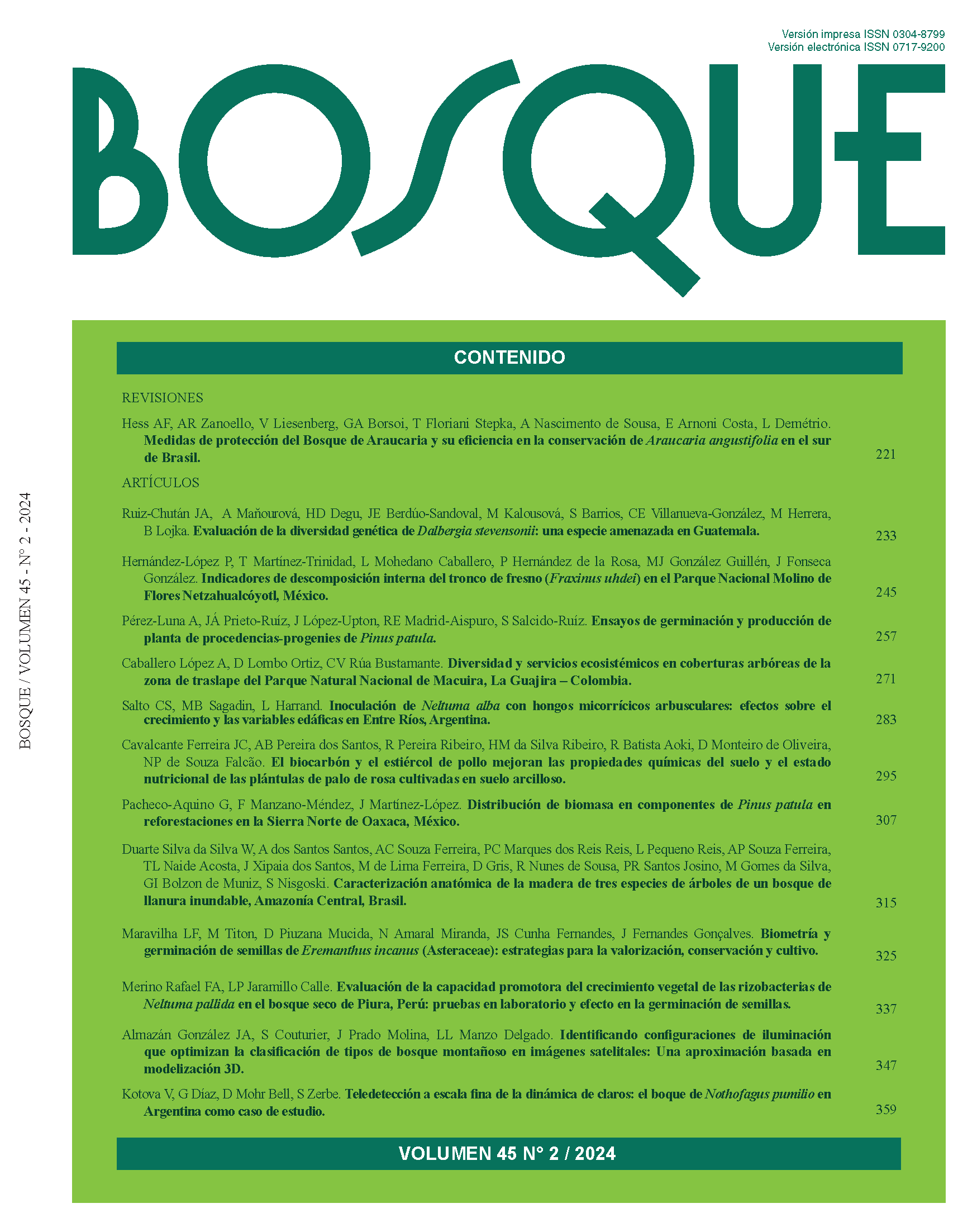Internal trunk decay indicators of ash tree (Fraxinus uhdei) in the Molino de Flores Netzahualcoyotl National Park, Mexico
Main Article Content
Abstract
The evaluation of the structural trunk condition is fundamental in determining the risk to people and urban infrastructure. The objectives were: 1) to evaluate indicators of the presence and severity of internal decomposition of the trunk of ash (Fraxinus uhdei) in the Molino de Flores Netzahualcóyotl National Park, 2) to determine the association between the basic visual level of risk and the severity of decay, and 3) determine the external visual characteristics of the tree that influence the probability of the presence of internal trunk decay. The risk of 50 trees was evaluated using the Porkorny method and the presence of decay was determined using a resistograph in two areas of the trunk: 30 cm (Base) and 1.3 m (DN) height from the ground. The severity of decay was determined by the sound wood- stem radius ratio. In general, the presence of internal decomposition was 30 %, being more frequent and severe in the base area than in the DAP. There is a moderate negative association between decay severity and risk rating. Finally, the presence of external visual indicators of decay at the base of the trunk and the presence of exposed roots with lesions are the two factors that predict the presence of internal decay of the ash tree trunk. These results contribute to the generation of more accurate ratings in basic level risk assessments.


 https://orcid.org/0000-0001-8681-8660
https://orcid.org/0000-0001-8681-8660